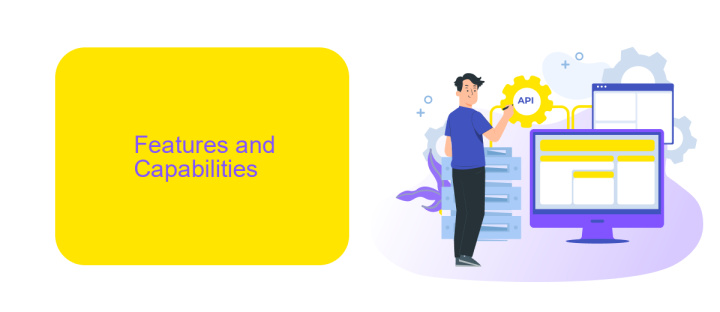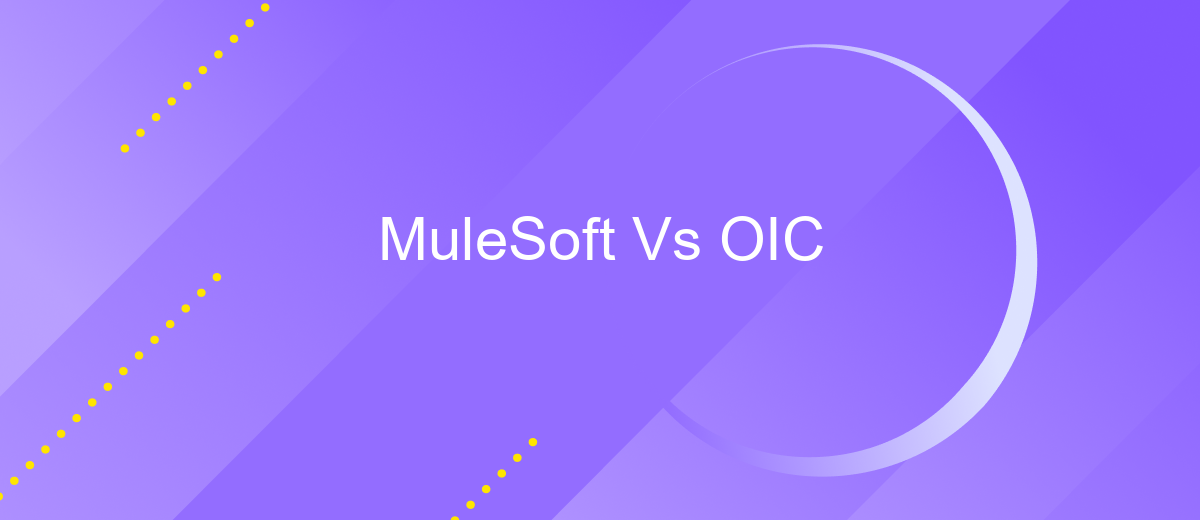MuleSoft Vs OIC
In the rapidly evolving landscape of integration platforms, MuleSoft and Oracle Integration Cloud (OIC) stand out as two leading solutions. Both platforms offer robust capabilities for connecting diverse systems, automating workflows, and enhancing business processes. This article delves into a comparative analysis of MuleSoft and OIC, exploring their features, strengths, and potential use cases to help you make an informed decision.
Introduction
In today's rapidly evolving digital landscape, businesses are increasingly relying on integration platforms to streamline their operations and enhance productivity. Two prominent players in this domain are MuleSoft and Oracle Integration Cloud (OIC). Both platforms offer robust solutions for connecting various applications, data sources, and APIs, but they have distinct features and capabilities that set them apart.
- MuleSoft: Known for its powerful Anypoint Platform, MuleSoft provides a comprehensive suite of tools for API management, design, and analytics.
- Oracle Integration Cloud (OIC): OIC offers a cloud-based solution that simplifies the integration process with pre-built adapters, enterprise-grade security, and real-time analytics.
- ApiX-Drive: A versatile integration service that automates data transfer between various platforms, making it easier for businesses to manage their workflows efficiently.
Choosing the right integration platform depends on various factors such as the specific needs of your business, existing IT infrastructure, and budget constraints. In this article, we will delve deeper into the features, advantages, and limitations of MuleSoft and OIC to help you make an informed decision.
Features and Capabilities

MuleSoft offers a comprehensive suite of tools designed to facilitate seamless integration across various systems and applications. Its Anypoint Platform provides robust API management, data integration, and connectivity solutions, enabling businesses to streamline their operations and enhance productivity. Key features include pre-built connectors, an intuitive design environment, and real-time analytics, ensuring efficient and scalable integrations. MuleSoft's capabilities extend to cloud, on-premises, and hybrid deployments, making it a versatile choice for diverse IT landscapes.
Oracle Integration Cloud (OIC), on the other hand, excels in providing an integrated platform that combines application integration, process automation, and data integration. OIC's user-friendly interface and pre-built adapters simplify the integration process, reducing development time and costs. Additionally, OIC offers advanced security features and seamless connectivity with Oracle and third-party applications. For businesses seeking to enhance their integration capabilities further, services like ApiX-Drive can be leveraged to automate workflows and synchronize data across multiple platforms, ensuring a cohesive and efficient operational environment.
Pricing

When comparing the pricing models of MuleSoft and Oracle Integration Cloud (OIC), it's essential to consider the specific needs and scale of your business. Both platforms offer flexible pricing structures that cater to various use cases, but they differ in their approach and cost-effectiveness.
- MuleSoft: MuleSoft follows a subscription-based pricing model, with tiers based on the number of integrations and the volume of data processed. They offer a free trial, and pricing details are typically customized based on your organization's requirements.
- Oracle Integration Cloud (OIC): OIC also offers a subscription-based pricing model, which includes different tiers based on the number of active integrations and the amount of data processed. Oracle provides a pay-as-you-go option, allowing businesses to scale their usage according to their needs.
For businesses looking to streamline their integration processes with additional tools, considering services like ApiX-Drive can be beneficial. ApiX-Drive offers a user-friendly interface for setting up integrations without extensive technical knowledge, potentially reducing overall costs and increasing efficiency. Evaluating these factors will help you choose the best platform for your integration needs.
Use Cases and Industry Adoption

MuleSoft and Oracle Integration Cloud (OIC) are widely adopted across various industries for their robust integration capabilities. These platforms enable businesses to connect disparate systems, streamline operations, and enhance data flow efficiency. MuleSoft is often favored in industries such as finance, healthcare, and retail due to its extensive API management and microservices architecture.
OIC, on the other hand, is popular in sectors like manufacturing, telecommunications, and government services, thanks to its strong support for Oracle applications and seamless cloud integration. Both platforms offer pre-built connectors and templates, simplifying the integration process for users.
- Finance: Real-time transaction processing and fraud detection.
- Healthcare: Patient data integration and interoperability.
- Retail: Inventory management and customer experience enhancement.
- Manufacturing: Supply chain optimization and IoT integration.
- Telecommunications: Network management and customer service automation.
Additionally, services like ApiX-Drive can further streamline the integration process by providing easy-to-use tools for connecting various applications and automating workflows. This enhances the overall efficiency and reduces the time required for implementation, making it a valuable asset for businesses looking to leverage MuleSoft or OIC.
Conclusion
In conclusion, both MuleSoft and Oracle Integration Cloud (OIC) offer robust solutions for enterprise integration needs, each with its unique strengths. MuleSoft's Anypoint Platform is highly regarded for its extensive API management capabilities, flexibility, and strong community support. On the other hand, OIC excels in its seamless integration with Oracle's suite of applications, making it an attractive option for businesses already invested in Oracle's ecosystem.
When choosing between MuleSoft and OIC, it's crucial to consider the specific requirements of your organization, such as existing technology stack, budget, and long-term integration goals. Additionally, leveraging third-party integration services like ApiX-Drive can further streamline the process by automating data flows between various applications, thereby enhancing overall efficiency. Ultimately, the best choice will depend on a careful assessment of your business needs and the strategic value each platform can offer.
FAQ
What are the main differences between MuleSoft and Oracle Integration Cloud (OIC)?
Which platform is easier to use for beginners?
Can both MuleSoft and OIC handle real-time data integration?
How do MuleSoft and OIC compare in terms of cost?
What are some alternatives for automating integrations without deep technical knowledge?
Time is the most valuable resource in today's business realities. By eliminating the routine from work processes, you will get more opportunities to implement the most daring plans and ideas. Choose – you can continue to waste time, money and nerves on inefficient solutions, or you can use ApiX-Drive, automating work processes and achieving results with minimal investment of money, effort and human resources.

